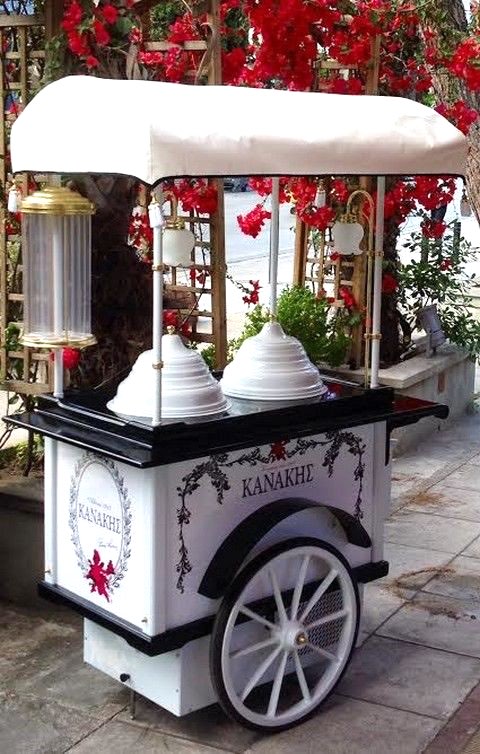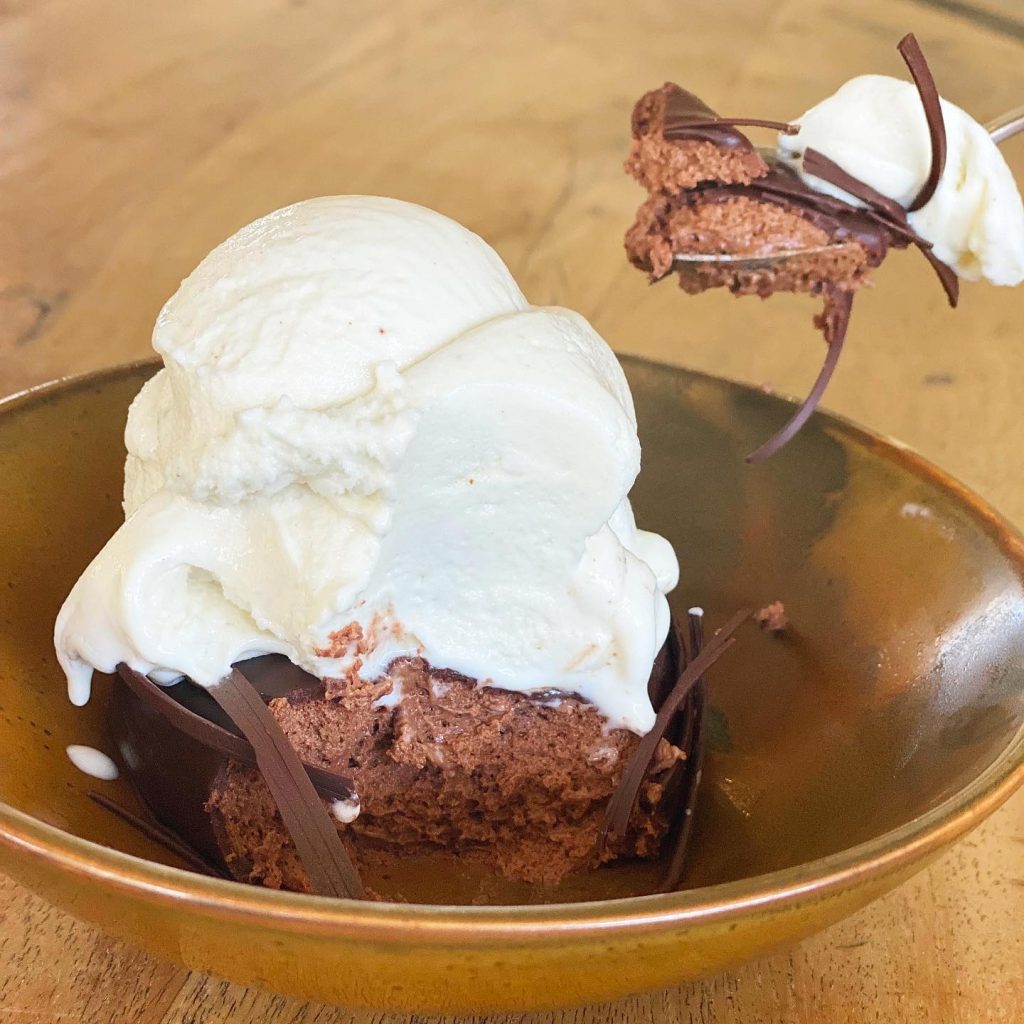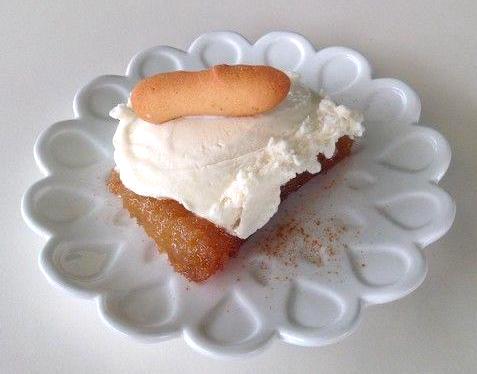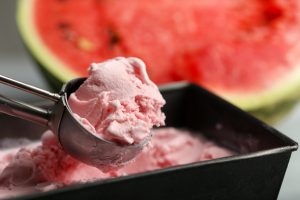A few decades back in Greece, not so long ago, one of the things all families did every Sunday, particularly during the summer, was go to the sweet shop in their neighborhood for ice cream. This outing would combine a short walk, some socializing, and of course, the reward: a big scoop of kaimaki ice cream topped with sour cherry spoon sweet and for the sweet tooths this would be served on top of a juicy ekmek kataifi.
Rich or poor, young or old, ice cream on Sunday was an absolute must for the Greeks. Today, ice cream in Greece is the third costliest in the EU, now vintage shops, mostly family owned serving traditional ice cream in and around Athens and Thessaloniki are being forced to call it quits, and traditional Greek kaimaki ice cream is becoming harder to find.
Ice Cream in Greece: 3rd Most Expensive in the EU
The value of ice cream in Greece in 2023 reached 250 million euros. Demand in the first half (H1) of the year increased by 18% over the same period in 2023 and turnover from sales grew by 22% compared to H1 a year ago. In 2022, a total of 35.5 million kilos of ice cream were sold generating approximately 247 million euros in revenues.
This upward trend has led to massive market changes driven by warmer weather, analysts say. Before climate change, ‘ice cream season’ in Greece was tops two months: July and August. Now sales start earlier and continue into September.
At the same time, however, ice cream is becoming a luxury for the Greeks with a liter going for some 3.7 euros in 2023 making it the third most expensive in Europe after Austria (7.7 euros/liter) and Hungary (4.8 euros/liter), according to data for 2023 released by Eurostat. In supermarkets prices start at 8 euros per liter while some specialty ice creams can sell for as much as 25 euros per liter. The cheapest ice cream was found in Germany, at 1.8 euros/liter. A scoop meanwhile in Greece costs between 3 to 4 euros up by as much as 25% in some cases compared to last year.
Family Owned Sweet Shops Struggling
“Kaimaki is a marketable product and very unique to Greece. It has a history and an inspiring story and has survived hundreds of years,” chef and pâtissiere Anna Spanou Kanaki tells To Vima English Edition.
Kanaki comes from a long line of ice cream makers. She is the third generation owner of Kanakis in Nea Philadelphia, a popular ice cream and sweet shop which even has a bus stop named after it.
Following her studies at the world-famous Le Cordon Bleu, Kanaki returned to Greece and worked hard to preserve the shop’s vintage feel in a neighborhood that is seeing radial changes after the opening of the AEK football stadium.
Nea Philadelphia is a northern Athens neighborhood populated mainly after the 1922 Asia Minor Catastrophe which saw thousands of displaced Greeks forced to leave their homes, properties, and fortunes behind in Turkey and start anew.

The traditional ice cream cart which would gather young and old for kaimaki ice cream in Greece in the past. Photo credit: Kanakis 1948
One of those people was Anna, Kanaki’s grandmother, who made Nea Philadelphia her new home. She met Panagiotis and together they created Kanakis. The shop is to this day – since 1947 when it first opened – renowned for its kaimaki ice cream, ekmek, and tsoureki sweet bread – all recipes passed down to them by her great grandmother Kalliope.

Perfect ‘relief’ for the summer heat: Grandpa Kanakis would serve his granddaughter Anna a chocolate ‘sokolatina’ cake topped with kaimaki ice cream. Photo credit: Kanakis 1948
“For years, she tried to convince my grandfather to make the dessert she made in the homeland Cesme (modern-day Izmir) in Turkey for her family: kaimaki. My great grandmother would make this ice cream when they lived in Turkey as a dessert which also aided with digestion after dinner,” says Kanaki. “Asia Minor cuisine is very spicy so a bit of kaimaki thanks to the mastic helped diners feel lighter.”
Her grandfather, from a remote village in Arcadia, finally agreed to do so after the war. “Kaimaki ice cream back then was made in a large barrel in the cellar and the whole family in shifts after the shop closed would whip the milk by hand until it became grannie Kalliope’s ice cream.”
Kaimaki: The Turkish Connection
Kaimaki is one of many things Greece and Turkey are each claiming as their own. In Turkey, the ice cream made with the same ingredients is called “Kaymakli Dondurma” with “kaymakli” meaning “creamy”. Authorities in Turkey have gone to great lengths to establish it as a Turkish dessert. The same ice cream however can also be found in Iran, Iraq, Syria, and the Balkans.
A variation of the dondurma is the kaimaki which was brought over to Greece in the 1960s by the banished Asia Minor Greeks. Both kaimaki ice cream and dondurma are made from fresh milk, sugar, sahlep, and mastic, which is unique to the Greek island of Chios and is a protected PDO product.
The quality and taste of kaimaki depends on the technique and the quality of the ingredients, explains Kanakis, who helped make the ice cream as a child.
“My grandfather made it with fresh sheep’s milk, sahlep, and mastic from Chios, and I continue to do so. I use the first tears collected from the Mastic trees on the island at the beginning of the season. The taste, aroma and health qualities are very strong then,” she tells To Vima English Edition. In Turkey they also use buffalo or goat milk.
For those who haven’t tasted kaimaki, it should exude a hint of mastic, a touch of sahlep which adds to its texture, should be slightly chewy and stretchy, and refreshing not too sweet, Kanaki says.
Demise of Old School Sweet & Ice Cream Shops
And while dondurma has evolved into one of Turkey’s top-selling tourist products, in Greece finding traditional kaimaki is a challenging task. At the same time, other cities in Europe, like Amsterdam, Prague, Vienna, and Paris, have gone to great lengths to protect their old school sweet shops, while in Athens those still making and serving quality kaimaki are few and far between, at least those that have managed to remain open. In Thessaloniki, the situation is a tad better. The reasons, Kanakis tells To Vima English Edition, have to do with viability and respect for our gastronomy which is an integral part of Greek cultural heritage.

“Unlike other cultures, Greeks undervalue their traditional cuisine and as a result their very identity also,” she says. “During my studies in Paris it was mandatory in the first year to travel across France and learn about the ingredients and traditional dishes of each region and how to prepare these. Why don’t we do it here?”
“Everything starts from and returns to the basics. And this is something that we have failed to do here in Greece. Nothing is being done on an official level, no organized and coordinated actions that will help keep gastronomy traditions and historic cafes and sweet shops alive,” she says.
“For me the utmost priority is to continue my family’s legacy and to make quality kaimaki ice cream that is affordable and all this at a time when the price of ingredients and operational costs are skyrocketing.”
Kanaki goes on to add that keeping a classic sweet and ice cream shop open in today’s Greek reality requires “having a plan. Serious actions must be taken on the part of the government to protect not only kaimaki ice cream but Greek gastronomy in its entirety”.
“In comparison with us, countries such as Turkey, France, and Italy, base a large part of their economy and their GDP on the promotion of their gastronomy. We sadly do not. It’s about time we take our food traditions seriously.”





